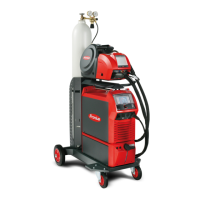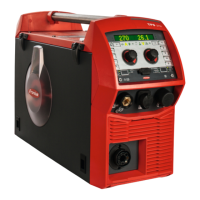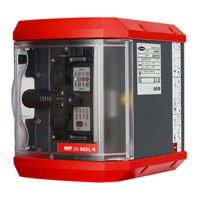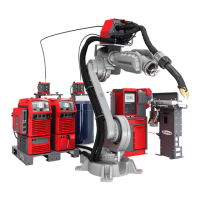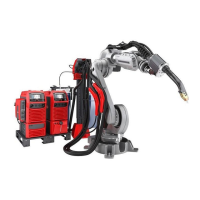110
Process parameters for TIG welding:
Anti-stick
to activate/deactivate the anti-stick function
Unit -
Setting range off / on
Factory setting on
As the arc becomes shorter, the welding voltage may drop so far that the rod electrode
will tend to stick. This may also cause the rod electrode to burn out.
The anti-stick function prevents the electrode from burning out. If the rod electrode begins
to stick, the power source switches the welding current off after 1.5 seconds. After the rod
electrode has been lifted off the workpiece, the welding process can be continued without
any problems.
Break voltage
for setting a voltage, at which the welding process can be ended by slightly lifting the rod
electrode.
Unit V
Setting range 20 - 90
Factory setting 90
The arc length depends on the welding voltage. To end the welding process, it is usually
necessary to significantly lift the rod electrode away from the workpiece. With the break-
voltage parameter, the welding voltage can be limited to a value that makes it possible to
end the welding operation simply by lifting the rod electrode slightly.
IMPORTANT! If, during welding, you often find that the welding operation is ended unin-
tentionally, increase the value of the break voltage.
Break voltage
for setting a voltage, at which the welding process can be ended by slightly lifting the TIG
welding torch.
Unit V
Setting range 10.0 - 30.0
Factory setting 14
Comfort Stop Sensitivity
to activate/deactivate the TIG Comfort Stop function
Unit - / V
Setting range off / 0.1 - 1.0
Factory setting 0.8
At the end of the welding operation, the welding current is switched off automatically if the
length of the arc increases by more than a defined amount. This prevents the arc being
unnecessarily elongated when the TIG gas-valve torch is lifted off the workpiece.

